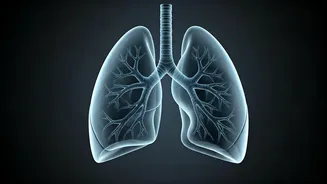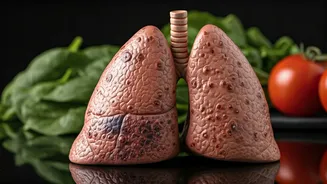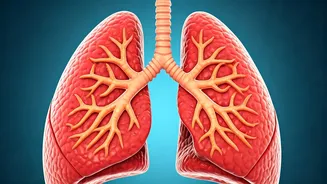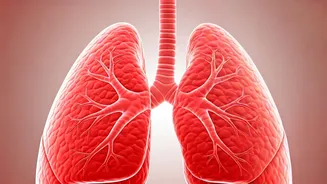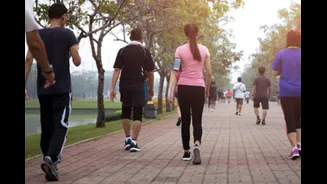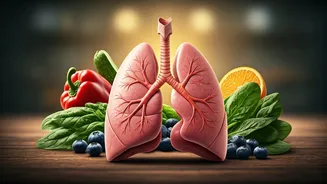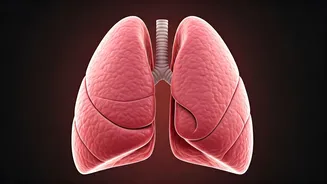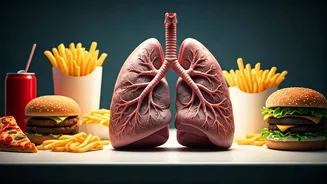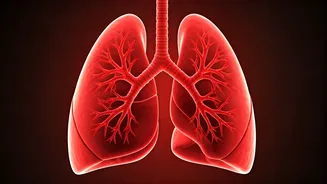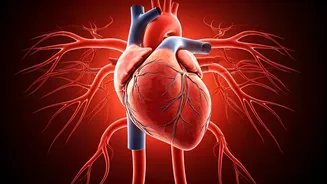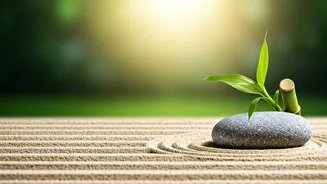Breathe Easy During Diwali
Diwali, the festival of lights, often brings with it a surge in air pollution. This can be challenging for your respiratory system. The good news is that
certain yoga poses can help you counter the effects of pollution and maintain healthy lungs. These asanas not only enhance oxygen intake but also strengthen your respiratory muscles. Remember to practice these indoors in a well-ventilated space, especially considering the post-Diwali pollution levels. Always consult your doctor before beginning any new exercise routine, especially if you have pre-existing health issues. This is crucial for ensuring the exercises align with your physical abilities and overall health status, ensuring you get the most out of them without any risk.
Bhramari: The Humming Breath
Bhramari, also known as the 'humming bee breath', is a powerful technique for calming the mind and improving respiratory function. While the article's context doesn't provide specific instructions, focusing on the breath itself can have significant benefits. This involves a controlled exhalation with a humming sound, which helps to soothe the nervous system and can reduce stress. The humming vibration also has a positive effect on the sinuses, clearing any congestion and improving airflow. Regular practice of Bhramari can aid in reducing anxiety, which can often worsen respiratory issues. The emphasis on breath control is an essential aspect of improving lung health and providing some relief from the effects of pollution.
Bhujangasana: Cobra Pose
Bhujangasana, or the Cobra Pose, is a key backbend that is excellent for opening up the chest and lungs. By gently arching the back, this pose increases the volume of oxygen intake, boosting lung function. To perform this asana, lie face down on your stomach with your legs extended and the tops of your feet flat on the floor. Place your hands underneath your shoulders, keeping your elbows close to your body. As you inhale, slowly lift your chest off the floor by straightening your arms and arching your back. Hold the pose for a few deep breaths, then slowly lower your chest back down. Remember to perform this indoors in a well-ventilated room, particularly after Diwali, to safeguard your lungs from pollutants. Consult with your healthcare provider before beginning any new exercise regimen if you have pre-existing health conditions.
Anulom Vilom: Alternate Nostril
Anulom Vilom, also known as alternate nostril breathing, is a powerful technique for clearing nasal passages and balancing the energy flow within the body. While the article's original context does not have specifics of Anulom Vilom, this breathing practice is commonly recommended for respiratory health. This practice involves inhaling through one nostril while the other is blocked, and then exhaling through the blocked nostril. This cyclical breathing pattern is known to calm the mind and reduce stress, thereby indirectly supporting lung health. The mindful focus on the breath can help to reduce anxiety, often associated with the smoggy conditions of Diwali. For optimal results, practice in a well-ventilated area, and adjust the duration based on your comfort level.
Kapal Bhati: Skull Shining
Kapal Bhati is a cleansing breath technique focused on forceful exhalations, which helps to remove toxins and clear the airways. It is designed to stimulate the abdominal muscles and improve lung function. Although specific instructions are not in the context, this technique can be incorporated into your daily practice, particularly when pollution levels are high. Regular practice can strengthen your abdominal muscles, which in turn benefits the respiratory system. Perform this practice in a comfortable and well-ventilated space. Remember to consult your healthcare provider if you have any health concerns before starting Kapal Bhati or any other new exercise program.
Ustrasana: Camel Pose
Ustrasana, or the Camel Pose, is a heart-opening posture that encourages deep breathing. While the original content doesn't detail this asana, it's worth mentioning. This backbend stretches the front of the body, including the chest, which enhances lung capacity. To safely practice Ustrasana, it's crucial to consult with a qualified yoga instructor or healthcare provider, particularly if you have any existing back issues or health conditions. Practicing this pose indoors, in a well-ventilated space, will help you avoid the pollutants in the air. This pose, when done safely, can promote deeper breathing, aiding in the removal of toxins from the body and improving overall respiratory health.


